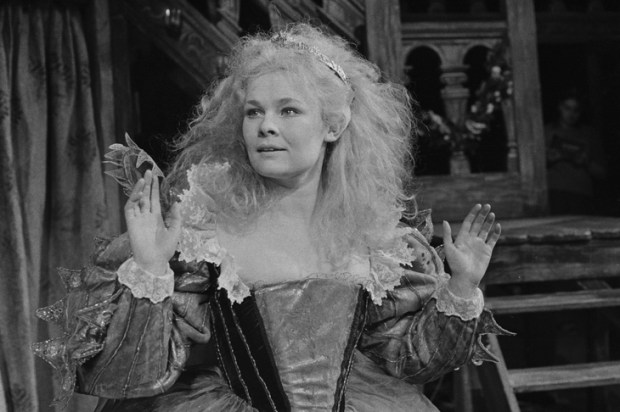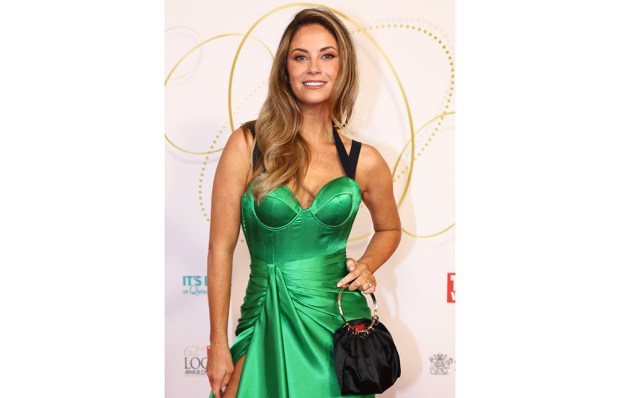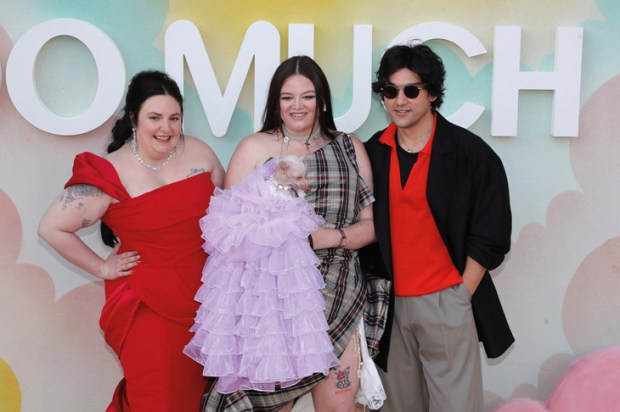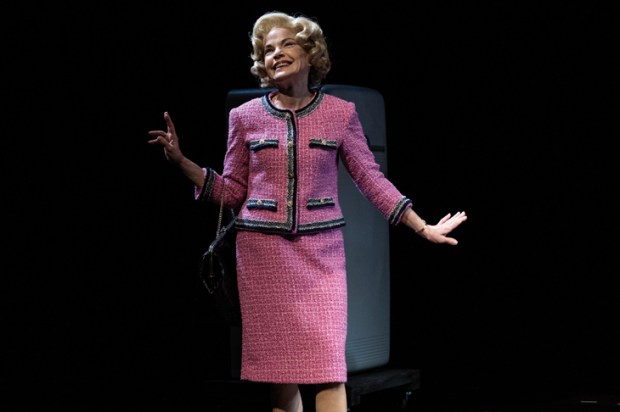Someone told me the new TV streamer The English had a weird resemblance to Cormac McCarthy who has just published a work in two parts which is a thousand miles from his cowboy turf, adventurous or ghastly with blood or atrocity. Well the first of the two episodes of The English (made by Hugo Blick who did The Honourable Woman with Maggie Gyllenhaal) is in that Jacobean Western mode that made Harold Bloom’s mind reel with Blood Meridian even though he considered it a masterpiece. The English – which hails from the BBC and was actually filmed in Spain to simulate the light and parched quality of the Wild West – is a post-Deadwood bit of shoot ’em up horror which also has the great advantage of Emily Blunt as an English aristocrat and a superb leading man Chaske Spencer who plays a Pawnee Indian, former United States cavalry and who also happens to be Native American and sings the songs of his people with an arresting grace.
Episode 1 is full of horror of every kind right down to the food. It presents a world of extraordinary gratuitous violence of the most grotesque kind and we have a seasoned team of Britishers – Toby Jones, the very grand Irish actor Ciaran Hinds, familiar from films like Munich and for playing Caesar in Rome, doing their deadliest to capture the smile of the murderous rapist face of the Land of the Free. By episode 2 Blunt is nursing babies with the encouragement of Spencer one of the starriest and most expressive Indians (if we’re allowed the forbidden word) since James Fenimore Cooper wrote The Last of the Mohicans. There’s a film of that engrossing and powerfully written yarn with Daniel Day-Lewis which doesn’t have much to do with the book though there was the cheering news a couple of years ago that Australia’s Nadia Tass was working on a project to film another of Fenimore Cooper’s Leatherstocking stories. Even when these things don’t get up it’s good to hear there’s at least a concerted effort made to honour the fact that these stories took it up to Sir Walter Scott, rivalling the sense of pageant and the twisting and turning momentum of narrative in Ivanhoe or the Waverley novels.
The Western is not hard to see as an ambiguous cultural product. You can cringe at the way kids in the Fifties and Sixties cheered at the late but triumphant entry of the cavalry to save the situation from those massacring Indians. And this in turn was better than the way D.W. Griffith’s epoch-making Birth of a Nation was an overt expression of racism, Ku Klux Klan and all.
But the history of culture is never simple and it’s right to remember, over and over, the truth of Walter Benjamin’s remark that the history of civilisation is always at the same time the history of barbarism. John Ford is the greatest of all masters of the Western. Martin Scorsese said he didn’t know why people carried on about his own work, he hadn’t made The Searchers. Orson Welles said he had studied the great American masters, ‘by which I mean John Ford and John Ford and John Ford.’ And right at the end of John Ford’s career there’s that extraordinary homage to the tragedy of the Native American people Cheyenne Autumn. Tony Abbott has sometimes been sneered at for his love of Westerns, one suspects by people who don’t realise how towering the greatest of them are.
In the 1950s TV Westerns became very benign with Gunsmoke and Rawhide (with the young Clint Eastwood) and then with that trio of gambling dude brothers James Garner, Jack Kelly and ultimately Roger Moore in Maverick. A bit later – back on the big screen – Sam Peckinpah put real visceral ghastliness into the Western but he had a flawless sense of drama. If you watch Pat Garrett and Billy the Kid again with Kris Kristofferson as the famous outlaw and James Coburn as the man who tracks him down everyone on the screen acts like an angel except for Bob Dylan who’s clearly there for no better reason – given that he can’t act, however great a performer he is – than the fact that he wrote for Peckinpah that stunning pop song – not a great song by the standards of Dylan’s greatness but great for its purposes – ‘Knockin’ On Heaven’s Door’.
What else happens to the Western? Well, there are Sergio Leone’s spaghetti Westerns which have a place in the history of cinema and there’s that Clint Eastwood masterpiece Unforgiven which ranks with some of the greatest films in the genre.
While we’re considering the folk tradition – the dream of America tradition of which the great Westerns are a part – it’s worth recalling that one of the greatest American films The Night of the Hunter –remember Robert Mitchum at his most sinister with LOVE on the knuckles of one hand and HATE on the other? – was made by that supremely English actor Charles Laughton: one film, one masterpiece.
One of the great legends of the relationship between White America and the people it drove from their land is the story of how William Tecumseh Sherman – the ‘war is hell’ general who burnt down Georgia in the American Civil War – when he was the head of the American army years later used to invite Crazy Horse the great Sioux leader to West Point. It was a story that polymath poet Les Murray used to love to tell. General Sherman would ask, ‘Chief Crazy Horse, if I were to move my cavalry into this quarter of the field, what would you do?’ They played war games together although they were enemies.
The idea of Crazy Horse as a great military strategist which this story would seem to support is disputed by Larry McMurtry – that master of the Western in free-flowing expert fictional prose – in the brief life of the great Lakota which he wrote for James Atlas’s series. He denies the generalship while adding that he doesn’t doubt that Crazy Horse had the skills of a great quarterback.
It will be interesting to see if the rise of indigenous actors and directors like Warwick Thornton in Australia leads to more films of frontier action.
Got something to add? Join the discussion and comment below.
You might disagree with half of it, but you’ll enjoy reading all of it. Try your first month for free, then just $2 a week for the remainder of your first year.













